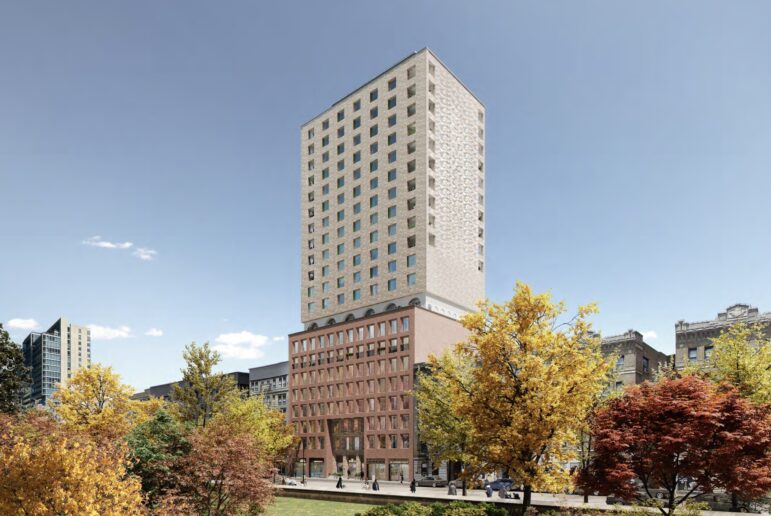Amid the rubble of September 11, the idea that the former site of the World Trade Center must be redeveloped under speedier-than-usual environmental reviews quickly became popular with the louder voices for rapid reconstruction. Now, as the Lower Manhattan Development Corporation (LMDC) prepares to release its development guidelines, civic groups seeking to influence the rebuilding process are also considering fast-track redevelopment, and LMDC members are taking them seriously.
In March, the Civic Alliance, a coalition convened by the Regional Plan Association, debated proposals to direct any eventual legal challenges to redevelopment plans directly to the appellate level of state court, instead of the usual point of entry, State Supreme Court. Cutting out one stage of legal review could shave a year or more off of court battles. (Initial review under the State Environmental Quality Review Act [SEQRA] and other laws take several years on top of that.) Members of the Alliance’s working group on regulatory matters have also discussed the idea with LMDC president Lou Thompson and member Alexander Garvin.
The Bar Association’s Special Committee on Downtown Development is discussing similar measures within its ranks and with LMDC members.
Proponents of the changes say the intent is not to degrade environmental planning, but to make sure lower Manhattan ends up with something other than a grim hole in the ground. “Seeing the site vacant for years and years is very bad from an environmental point of view,” says Jim Tripp, executive director of Environmental Defense and co-chair of the Civic Alliance working group. “It’s about combating sprawl, making one of the most densely compact parts of the country livable again.” Tripp would like to see an early start to the environmental review process, to promote open public assessment of plans and serious consideration of alternatives.
All of that is supposed to happen under SEQRA, and if done thoroughly would theoretically preempt the need for lawsuits. SEQRA calls for consideration of impacts on air, water, and the rest of the natural environment, and subjects to scrutiny a development project’s stresses on physical infrastructure (such as sewage treatment and transportation).
But some urban planners and lawyers with the Civic Alliance fear that emergency WTC regulatory changes will set a precedent for fast-track environmental review, without ensuring meaningful public input up front. While she agrees SEQRA is time-consuming, Eva Hanhardt of the Municipal Art Society, a Civic Alliance member, adds, “I’m hesitant about using this kind of tragic moment to rush major changes to processes that will not only affect all parts of a city, but also over a long period of time.”
Some of the skepticism has to do with the interests of some advocates for faster review. The Civic Alliance working group is co-chaired by Deborah Beck of the Real Estate Board of New York, whose members could benefit significantly from less onerous regulation on their development plans. The Bar Association committee is headed by Stephen Kass, who represented the New York Power Authority in its law-bending efforts to get permits for temporary waterfront power generators. And an influential proposal to speed the review process was drafted by respected environmental attorney Michael Gerrard, who has since been hired by Silverstein to advise the developer on environmental matters related to WTC reconstruction.
“People are watching this process,” says Gail Suchman of New York Lawyers for the Public Interest, a leading critic of the fast-track proposal. She’s guessing they hope “that whatever process is chosen for the World Trade Center will spill over to all other projects in the city.”







